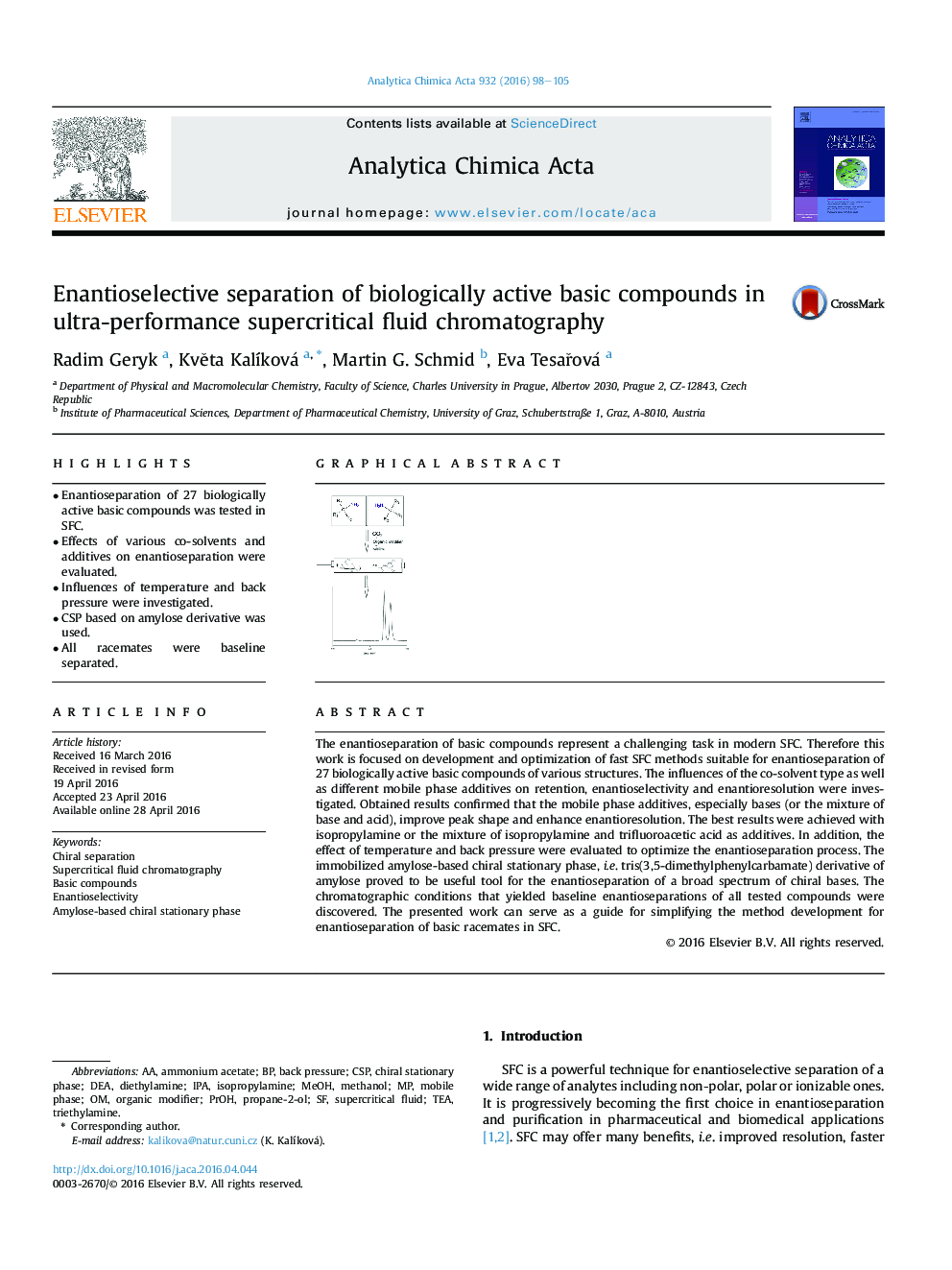| Article ID | Journal | Published Year | Pages | File Type |
|---|---|---|---|---|
| 1162786 | Analytica Chimica Acta | 2016 | 8 Pages |
•Enantioseparation of 27 biologically active basic compounds was tested in SFC.•Effects of various co-solvents and additives on enantioseparation were evaluated.•Influences of temperature and back pressure were investigated.•CSP based on amylose derivative was used.•All racemates were baseline separated.
The enantioseparation of basic compounds represent a challenging task in modern SFC. Therefore this work is focused on development and optimization of fast SFC methods suitable for enantioseparation of 27 biologically active basic compounds of various structures. The influences of the co-solvent type as well as different mobile phase additives on retention, enantioselectivity and enantioresolution were investigated. Obtained results confirmed that the mobile phase additives, especially bases (or the mixture of base and acid), improve peak shape and enhance enantioresolution. The best results were achieved with isopropylamine or the mixture of isopropylamine and trifluoroacetic acid as additives. In addition, the effect of temperature and back pressure were evaluated to optimize the enantioseparation process. The immobilized amylose-based chiral stationary phase, i.e. tris(3,5-dimethylphenylcarbamate) derivative of amylose proved to be useful tool for the enantioseparation of a broad spectrum of chiral bases. The chromatographic conditions that yielded baseline enantioseparations of all tested compounds were discovered. The presented work can serve as a guide for simplifying the method development for enantioseparation of basic racemates in SFC.
Graphical abstractFigure optionsDownload full-size imageDownload as PowerPoint slide
